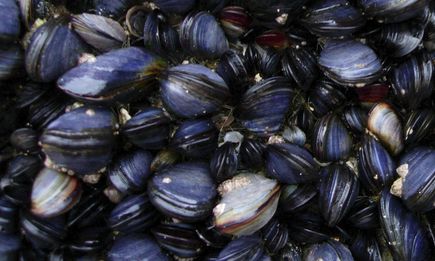Mussels more effective than chemicals

Pharmaceuticals, personal care products, herbicides and flame retardants are increasingly showing up in waterways. Research from Stanford finds that a natural, low-cost solution – clams and mussels – may already exist for these contaminants of emerging concern, or CECs.
These chemicals are found in some waters at trace levels; little is known about their ecosystem health impacts. But some have been implicated as potentially harmful to fish reproduction in waters receiving large inputs of wastewater.
In the right quantities, bivalves such as clams and mussels can remove some CECs from water in a matter of days. The study’s findings make a case for the conservation and restoration of freshwater bivalve habitat as a means of ensuring and amplifying the species’ capacity to naturally purify water.
Restoring ecosystems and cleaning water
“We would be doing two things here – restoring ecosystems and cleaning water,” said co-author Richard Luthy, Professor of Civil and Environmental Engineering. Found in municipal wastewater, agricultural runoff and animal wastes, CECs don’t break down easily when they reach streams and other waterways. Although much remains unknown about their impacts, CECs are not considered a threat to tap water or water reuse for irrigation.
In the Stanford study, researchers subjected native California floater mussels and invasive Asian clams to treated wastewater with various concentrations of CECs. Within 72 hours, the clams and mussels had removed up to 80 percent of some of the chemicals.
Mussels at risk of extinction
Luthy speculated that municipal water treatment facilities were unlikely to employ bivalves in their systems, due to the management and maintenance issues involved. However, Luthy said, mussels and clams could be put to work in wetlands and managed natural water systems to further treat plant effluent, agricultural runoff and other wastewater sources. This arrangement could have the added benefit of saving bivalves themselves. More than 70 percent of native U.S. freshwater mussels are at risk of extinction.
Just as engineered oyster beds and rafts in the Bronx River and Long Island Sound are bringing back the eastern oyster and helping control nutrients and excessive algae, freshwater clams and mussels could be managed to remove trace levels of CECs and improve water quality in streams dominated by effluent or urban runoff. “Each native mussel filters about two liters of water a day, so it doesn’t take a whole lot to improve water quality,” Luthy said.
Luthy and the study’s lead author, Niveen Ismail, plan to further study bivalves. They will look at the creatures’ ability to absorb trace chemicals and pathogens, with an eye toward harnessing additional benefits from the re-introduction of native species in decline as well as invasive species that dominate some waterways. They will demonstrate bivalves’ potential as water cleansers at San Francisco’s Mountain Lake, a water body contaminated with harmful bacteria. By showing that mussels’ filtering processes can remove harmful bacteria as well as CECs, the work will support efforts to improve water quality and restore native species.
“While there is still considerable research needed to determine the best method to deploy these bivalves on a large scale, at Mountain Lake we are considering using a raft carrying caged native bivalves which will allow us to monitor the health of the bivalves and also protect them from predators,” Ismail said.
Meest Gelezen
Vrouwen houden universiteit draaiende, maar krijgen daarvoor geen waardering
Wederom intimidatie van journalisten door universiteit, nu in Delft
Hbo-docent wil wel rolmodel zijn, maar niet eigen moreel kompas opdringen
‘Burgerschapsonderwijs moet ook verplicht worden in hbo en wo’
Raad van State: laat taaltoets nog niet gelden voor hbo-opleidingen

